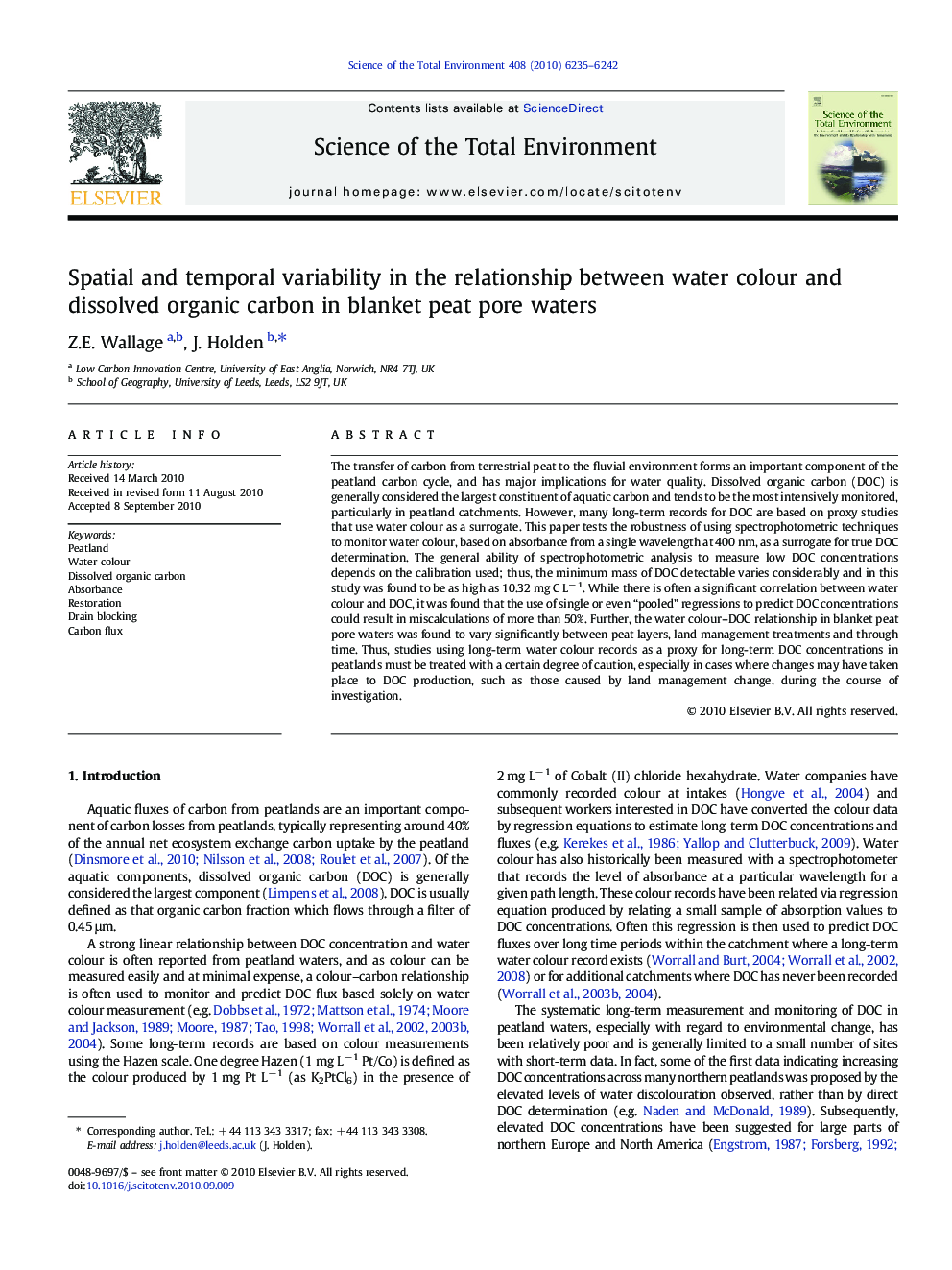| Article ID | Journal | Published Year | Pages | File Type |
|---|---|---|---|---|
| 4431142 | Science of The Total Environment | 2010 | 8 Pages |
The transfer of carbon from terrestrial peat to the fluvial environment forms an important component of the peatland carbon cycle, and has major implications for water quality. Dissolved organic carbon (DOC) is generally considered the largest constituent of aquatic carbon and tends to be the most intensively monitored, particularly in peatland catchments. However, many long-term records for DOC are based on proxy studies that use water colour as a surrogate. This paper tests the robustness of using spectrophotometric techniques to monitor water colour, based on absorbance from a single wavelength at 400 nm, as a surrogate for true DOC determination. The general ability of spectrophotometric analysis to measure low DOC concentrations depends on the calibration used; thus, the minimum mass of DOC detectable varies considerably and in this study was found to be as high as 10.32 mg C L− 1. While there is often a significant correlation between water colour and DOC, it was found that the use of single or even “pooled” regressions to predict DOC concentrations could result in miscalculations of more than 50%. Further, the water colour–DOC relationship in blanket peat pore waters was found to vary significantly between peat layers, land management treatments and through time. Thus, studies using long-term water colour records as a proxy for long-term DOC concentrations in peatlands must be treated with a certain degree of caution, especially in cases where changes may have taken place to DOC production, such as those caused by land management change, during the course of investigation.
